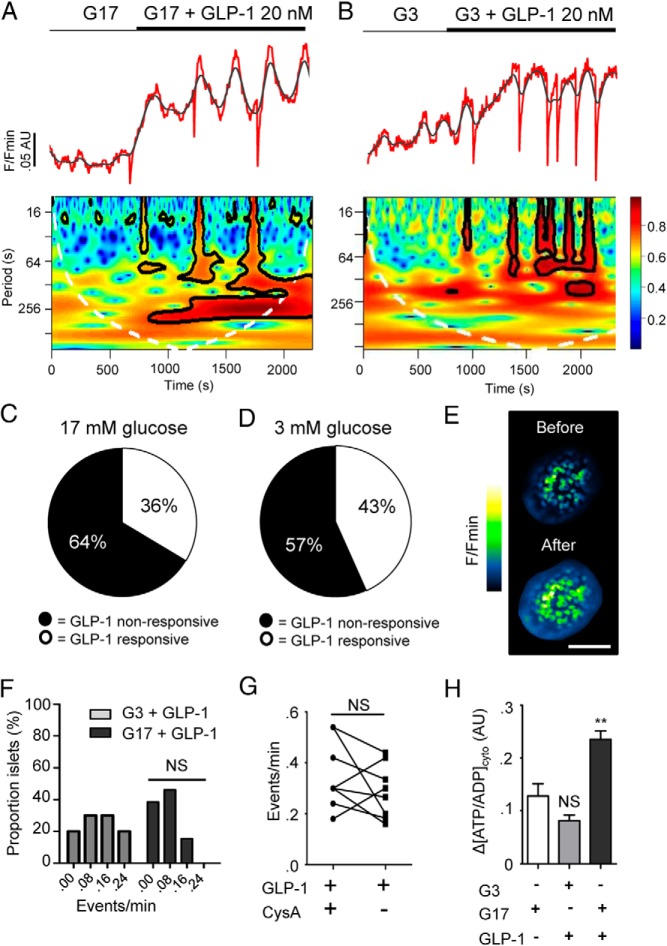Figure 2.
GLP-1 induces [ATP/ADP]cyto increases in intact islets under low and high glucose conditions. A, 20 nM GLP-1 increases cytoplasmic ATP in islets perifused with 17 mM glucose (G17) (top panel; representative trace; red, raw; gray, smoothed). Wavelet analysis shows the effects of GLP-1 on the period and power (0–1 = blue-red) of ATP oscillation frequency. B, As for A, but islets exposed to 3 mM glucose (G3). C, GLP-1 engages a subpopulation of metabolically-coupled beta cells at 17 mM glucose. D, As for C but in the presence of 3 mM glucose. E, Representative images showing Perceval fluorescence in an islet before and after introduction of GLP-1 (image cropped to display a single islet; scale bar, 115 μm). F, Glucose concentration does not modulate the effects of GLP-1 on ATP oscillation frequency (NS, nonsignificant; Mann-Whitney U test on the nonbinned data, n = 13 recordings from six animals). G, Cyclosporin A (CysA) does not prevent appearance of downward deflections in [ATP/ADP]cyto (NS, nonsignificant vs GLP-1 + CysA; Student paired t test, n = 8 recordings from four animals). H, Glucose and GLP-1 are equipotent at elevating [ATP/ADP]cyto in islets and the incretin can elicit additional increases at high (17 mM) glucose concentration (NS, nonsignificant and **, P < .01 vs G3; one-way ANOVA followed by Bonferonni's post hoc test, n = 13–14 recordings from six animals).

